Restoration and conservation efforts hinge on the identification of key habitats, such as fish spawning habitats (Lewis et al. 1996; Kondolf 2000), and the potentially distinct populations that use them. Knowledge of these habitats can help to ensure that conservation...
environment
Testing habitat’s influence on Cisco reproductive success using egg translocation
Great Lakes Restoration Initiative studies from the Coordinated Science and Monitoring Initiative, Native Fish Restoration, and DOI Steering Committee from fiscal years 2018 - 2022 have rapidly improved our understanding of how habitat influences coregonine spawning...
Defining bloater spawning habitat to inform potential impediments to Lake Ontario bloater reintroduction
Efforts to reintroduce bloater (Coregonus hoyi) in Lake Ontario have been ongoing for 11 years (Weidel et al. 2022). Although more than 1.1 million bloater have been released, the objective of a self-sustaining population has yet to be achieved. Reintroduction efforts...
How have changes to coregonine spawning habitat influenced reproductive success?
Lake Ontario’s Cisco, Coregonus artedi, and Lake Whitefish, Coregonus clupeaformis populations have declined for centuries and surveys suggest populations are impeded during early life stages. This project developed methods to quantify habitat specific coregonine egg...
Spatio-statistical modeling and field validation of coregonine spawning and nursery locations for the Great Lakes, including connecting channels and major tributaries
This research builds on the spawning habitat inventory work [GLRI: Inventory and assessment of coregonine spawning locations in lakes Erie and Ontario, including connecting channels] by using data gleaned from the previous study to develop descriptive and predictive...
Quantifying a potential mechanism between ice cover and cisco recruitment success: what role does light play in cisco embryonic development and larval survival?
Over the past several decades, Coregonus recruitment has dwindled to unprecedented levels for unknown reasons. Coregonus species are fall spawners whose embryos incubate under ice throughout the winter and hatch in spring. Recent changes in ice cover coupled with poor...
Contemporary habitat selection and survival of cisco in Lake Erie
This project addressed impediments to the rehabilitation of Cisco (Coregonus artedi) in Lake Erie through the application of acoustic telemetry to develop novel data on habitat use and survival of experimentally stocked fish. We tagged Cisco at the Tunison Laboratory...
